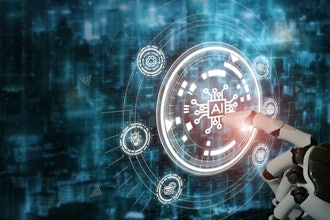
This is part 1 of a 2 part series; part 2 can be found here.
As companies search for ways to get the most out of their existing operating assets, Enterprise Asset Management (CMMS/EAM) software packages are key. However, when it comes to researching, selecting and implementing the right CMMS/EAM, some of the same mistakes have been made for decades and some new ones have emerged. This article explores 10 of the more common mistakes you should avoid if you are looking for a new or replacement CMMS/EAM system. The mistakes are listed in no particular order. Conclusions are supported by a recent survey conducted by Plant Services magazine.
Mistake #1 – You are far too focused on the software’s “look and feel.”
Ever since software was invented, there has been considerable effort expended by users to find a CMMS/EAM package with the perfect user interface. This obsession is evidenced by the Plant Services Reader Survey results, which ranked “Intuitive User Interface” as the most important criterion of 21 (see Exhibit 1). Many people would explain that any software application that forces the user to move through numerous fields, screen after screen, one tab after another, to access the information needed is just not worth using at all.
Although there is no question that the user interface is extremely important, there has been significant progress in this area over the years. Most of the major CMMS/EAM software vendors have engaged human factors expertise, either internally or externally, to improve their user centered design. The most modern software packages have incredible tools to help users tailor the look and feel of screens, and focus workers on actionable tasks that create value and improve productivity. A few packages allow a given company to quickly and easily configure menus, screens, tabs, data entry forms, reports and so on to meet the needs of a given division, department, job function or individual.
Although there is always room to improve, users should not fixate on the user interface as the most significant differentiator among the better CMMS/EAM software packages. Other key factors that do a better job of differentiating modern CMMS/EAM packages are discussed elsewhere in this article.
Mistake #2 – You are purchasing software based on functional fit only.
As CMMS/EAM software increases in scope and complexity, selection is becoming increasingly based on the relationship with the vendor rather than simply the software tool it sells. This is because partnering with the right vendor can facilitate the implementation of more long-lasting improvements. As can be seen from Exhibit 1, the user community ranks “Ease of Implementation” as a close second in terms of importance. Ease of implementation can be defined as not only how quickly the software can be installed, but more importantly, the length of time and degree of difficulty in achieving your goals and performance targets.
Perhaps users are finally recognizing after decades of CMMS/EAM implementation that the probability of success goes up dramatically when the vendor provides both proper support as well as good software. Try to find a vendor that is in it for the long haul, and for the right reasons – not because their software is so difficult to implement, use, reconfigure and, ultimately, meet business objectives.
Today, many CMMS/EAM vendors have incredible resources that can be brought to bear. Look for a vendor partner whose resources best fit your specific needs, now and over the long run. Some of the supporting services that vendors offer are as follows:
- assessment of organizational readiness and gap analysis to understand what changes will be necessary for a successful implementation,
- process design expertise to map your software configuration to optimized business processes,
- guidance about industry best practices,
- assistance in setting up key performance indicators (KPIs) to ensure users are focused on the right things, and
- facilitation of data analysis and decision-making to ensure expected savings and benefits are achieved.
Your relationship with the CMMS/EAM vendor should not end once the system has been implemented. This is why it is so important to partner with a vendor that is strong financially, especially in the face of tough economic times. The vendor can be extremely helpful in establishing a framework for continuous improvement by assisting with performance assessment and benchmarking, as well as fine-tuning asset management processes and the underlying CMMS/ EAM system. Furthermore, as software upgrades are released on a regular basis, typically every 12-18 months, there is ample opportunity to partner with the vendor over the long term.
There also are benefits in partnering with a vendor that has enough depth to provide a suite of business solutions, especially for a large organization. However, be cautious about the tradeoffs between a best-of-breed solution and single-vendor suite, as described below under “Mistake #8.”
Mistake #3 – You think your CMMS/EAM is just a static data and reporting system.
When CMMS/EAM systems were first implemented many decades ago, they were viewed as an effective means of computerizing existing manual processes. The CMMS/EAM tool amounted to not much more than an electronic data depository. Many companies today make the mistake that nothing much has changed from those early days, i.e., the CMMS/EAM is primarily used for entering and storing data for producing reports on a regular or ad hoc basis. However, modern systems offer so much more functionality on a real-time basis. With features such as notification, alarming or alert management, as well as the even more sophisticated workflow engine, your CMMS/EAM system is transformed into a real-time monitoring and control system.
For example, assets can be monitored 24 hours/day, 7 days/week, in terms of any measure, from asset reliability and performance, to compliance, energy consumption and safety. When a key measure for a critical asset equals, rises above or drops below a certain trigger point, then a workflow can be initiated such as automatically issuing a work order, and/or notifying a supervisor via e-mail or cell phone. This functionality forms the basis for predictive maintenance, which can not only help transform day-to-day maintenance fire-fighting into a more planned environment, but can significantly reduce operating costs and risks.
According to Exhibit 2, those surveyed ranked “notification and workflow” as second-worst in terms of how well their current CMMS/EAM package performs. Unfortunately, in my experience, this more likely reflects the users’ lack of knowledge about how to properly utilize this functionality, rather than any major shortcomings in software performance. Notification, alert management, alarming and workflow are powerful and advanced software features that can transform your CMMS/EAM into a real-time and dynamic knowledge-management system that drives simplicity and more value-added action.
The good news is that the criteria labeled “planning and scheduling” ranked #3 overall (see Exhibit 1). This means users generally recognize the importance of a planned environment. Proper planning is a necessary condition for achieving maximum benefit from the notification and workflow functionality. Advanced planning features include the ability to:
- create multiple job plans for each asset/component,
- implement multiple triggers for preventive and condition-based maintenance,
- establish indicators for real-time monitoring of energy consumption and emission levels,
- calculate and record asset criticality, and
- conduct real-time trend analysis for conditions, energy consumption, emission levels, regulatory compliance and so on.
Mistake #4 – You are hung up on the slicing and dicing of CMMS/EAM data.
There is an infinite number of ways to filter, sort and manipulate the reams of data entered into today’s CMMS/EAM software. The better CMMS/EAM packages provide easy-to-use analysis and maintenance optimization tools that support decision-making at all levels, from maintainer to senior management. Users seem to recognize the importance of this functionality, as seen in Exhibit 1 wherein “maintenance optimization” and “analysis tools” are ranked #4 and #5 respectively.
Sophisticated analysis tools geared to each job position provide visibility into your operations for better control of your business. Imagine arriving each day at work and checking your computer screen for a real-time dashboard display of the Key Performance Indicators (KPIs) most relevant to your job.
For example, suppose as a maintenance planner, your schedule compliance KPI is “in the red” for a given asset group when you turn on your computer one Monday morning. By drilling down on this measure, you have instant access to the asset history showing a backlog of work orders that were generated over the weekend. In a further drill-down to analyze condition trends, you discover that the condition of the asset group seems to be deteriorating prematurely for a given manufacturer, and is thus triggering PM job tasks earlier than expected. By checking your notifications and alerts on your dashboard, you notice that these work orders were flagged as eligible for warranty coverage, and as regulatory compliance-related.
Thus, one of the most powerful differentiating features to look for in a CMMS/EAM system, especially when coupled with the notification and workflow functionality described above, is the ability to quickly and easily analyze data, including:
- configurable KPIs,
- dashboards and business intelligence,
- advanced analytics and maintenance optimization tools,
- comprehensive risk-management and compliance tools, and
- advanced warranty-management functionality.
Mistake #5 – You believe “green” functionality is today’s “flavor of the month.”
According to a Plant Services survey, U.S. companies invest more than $100 billion annually in capital equipment and services, including new plant construction and retrofits, as well as maintenance, repair and replacement. But those same companies spend more than $400 billion each year on energy. Given that energy prices are expected to rise over the long term, it is fairly safe to assume that the tracking of energy consumption is more than just a passing fad and flavor of the month. In a study conducted by Plant Services magazine, manufacturers felt strongly that energy prices will have the most significant impact on operations in manufacturing plants throughout the United States (see Exhibit 6).
With the recent explosion in energy prices, price volatility and the impending financial consequences of carbon equivalents, it is no surprise manufacturers feel this way.
Manufacturers that can manage and control their use of energy will create a competitive edge. A CMMS/EAM should allow companies to implement sustainability best practices such as:
- measuring energy use at the asset level,
- understanding the carbon footprint of assets, products, product lines, etc., and the ability to compare or benchmark performance across like assets, and
- incorporating energy efficiency into asset life-cycle practices, i.e., applying maintenance practices to specific underperforming assets that restore energy efficiency to its designed performance characteristics.
For this reason, it is critical for you to select a CMMS/EAM system that has comprehensive functionality to track energy consumption, emissions and other green measures to gain insight into the real costs of operating your assets. Perhaps users have not yet realized that this functionality exists on some CMMS/EAM packages, as evidenced by the relatively low importance ranking of #17 out of 21 for the criterion “comprehensive energy tracking” in the survey shown in Exhibit 1. Moreover, according to Exhibit 2, those surveyed ranked “comprehensive energy tracking” as the worst in terms of how well their current CMMS/EAM package performs.
In contrast, there is the relatively high importance ranking of #6 out of 21 for the criteria “health, safety and the environment.” This might be explained by the recognition of users that the CMMS/EAM is important for ensuring regulatory compliance and safety protection of personnel and equipment.



















